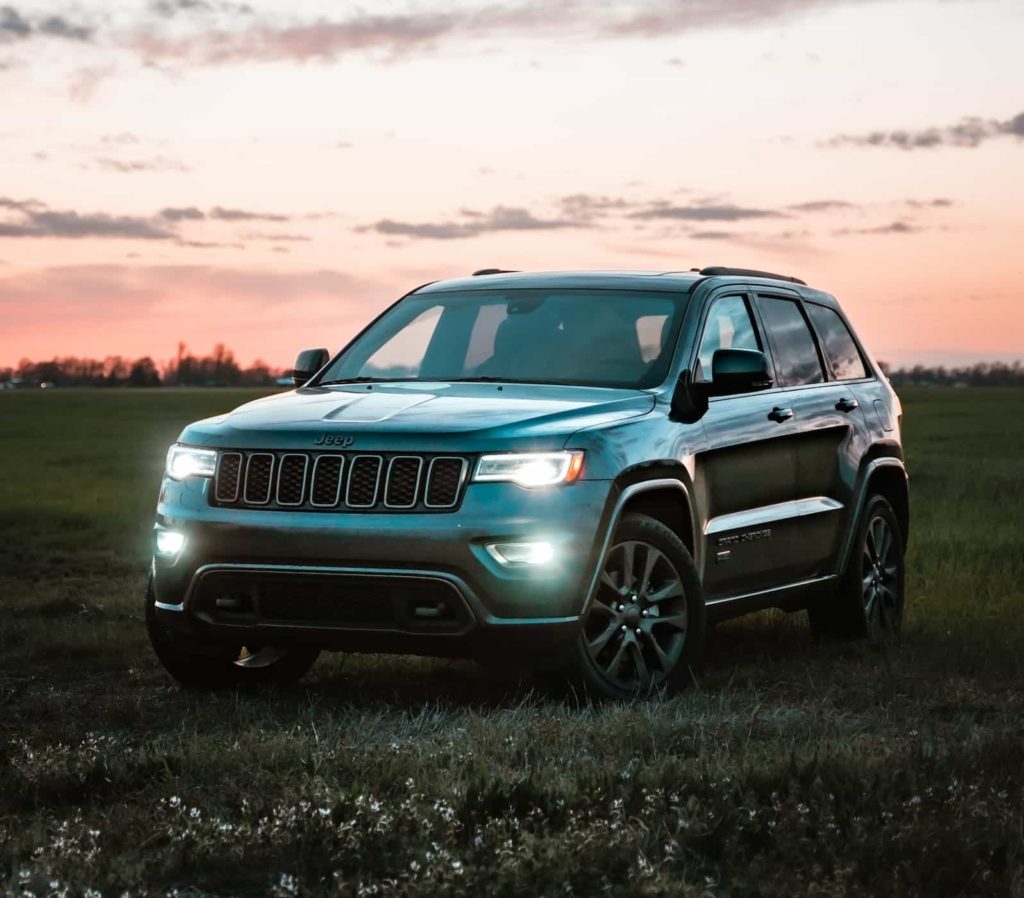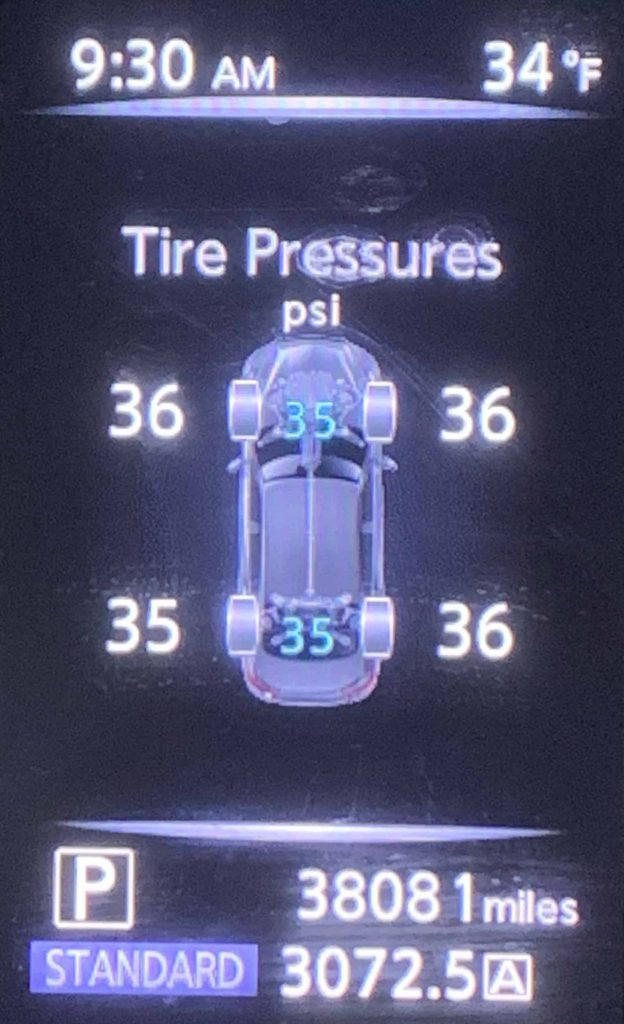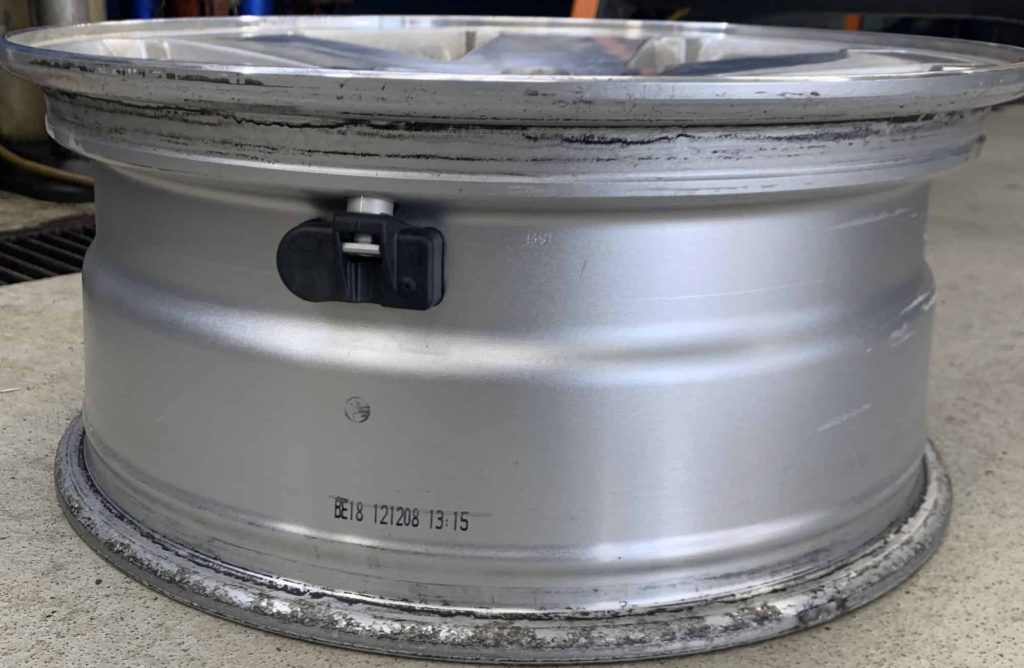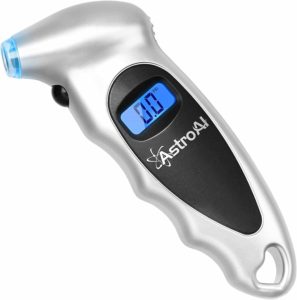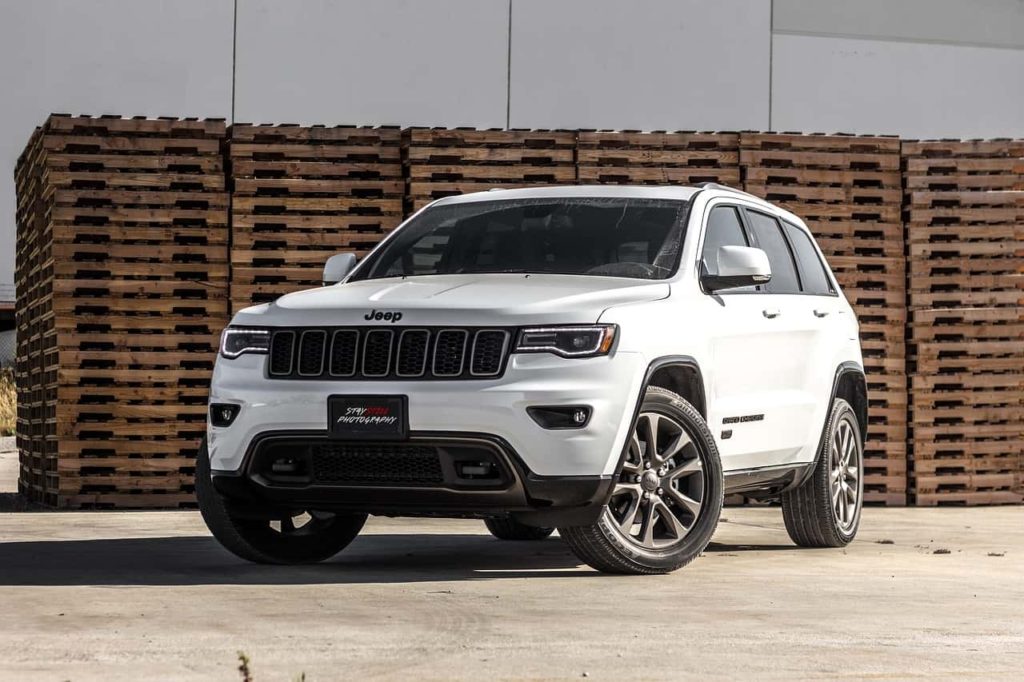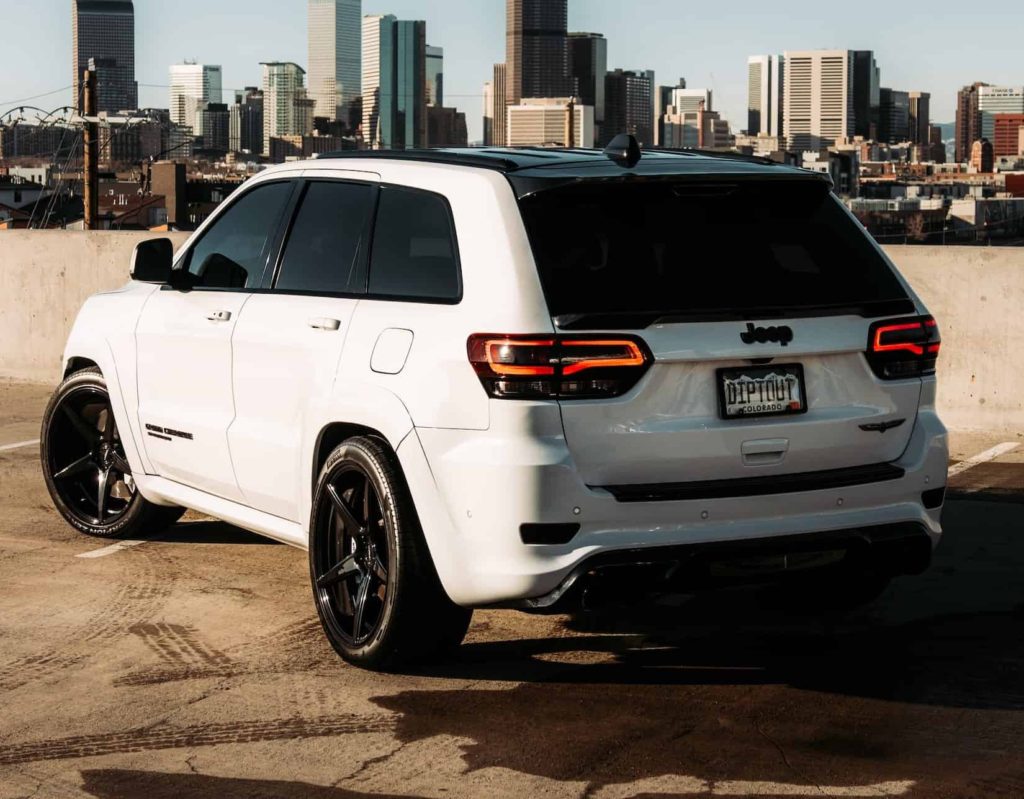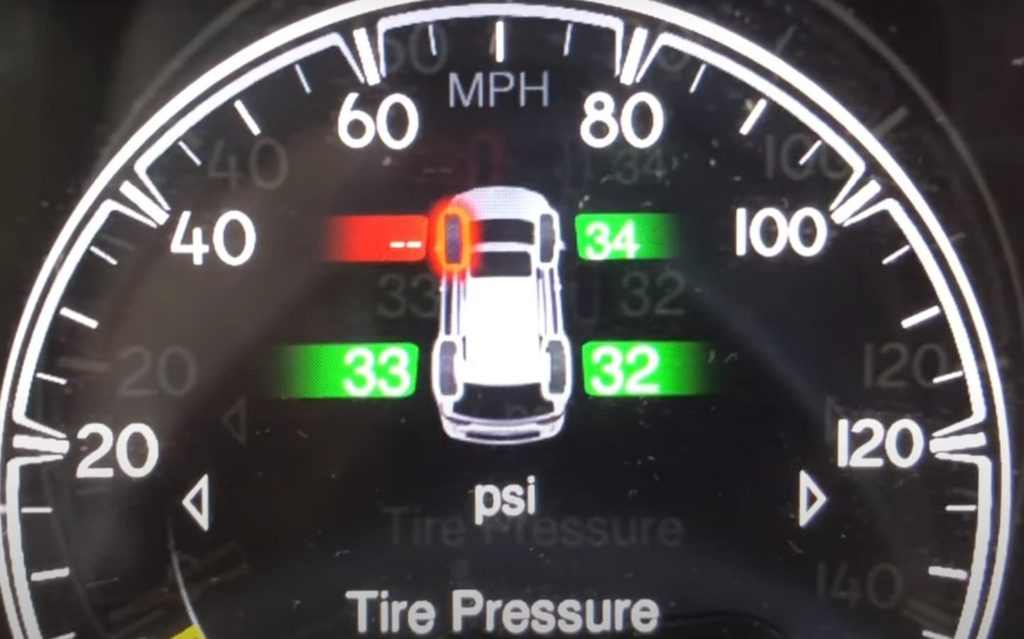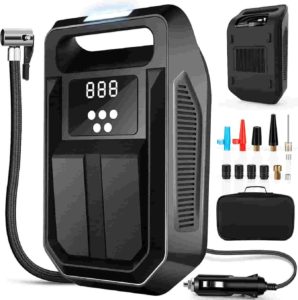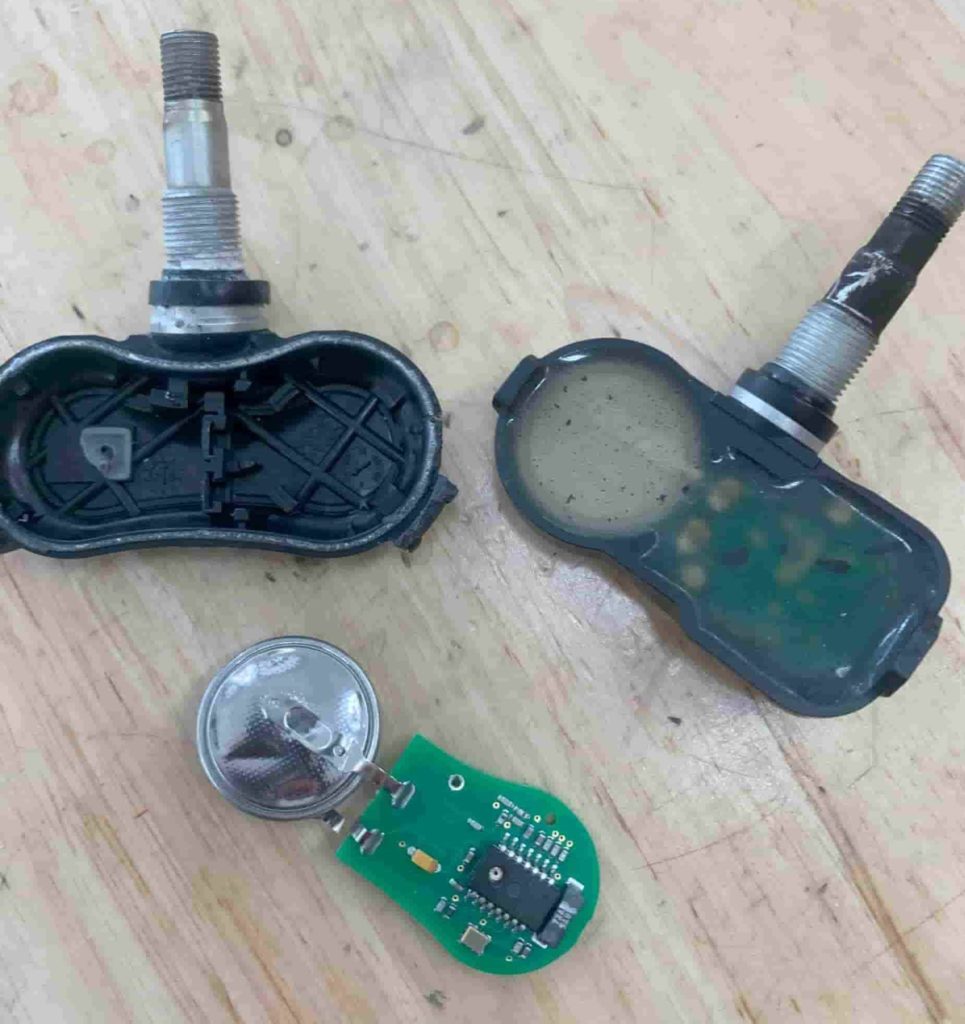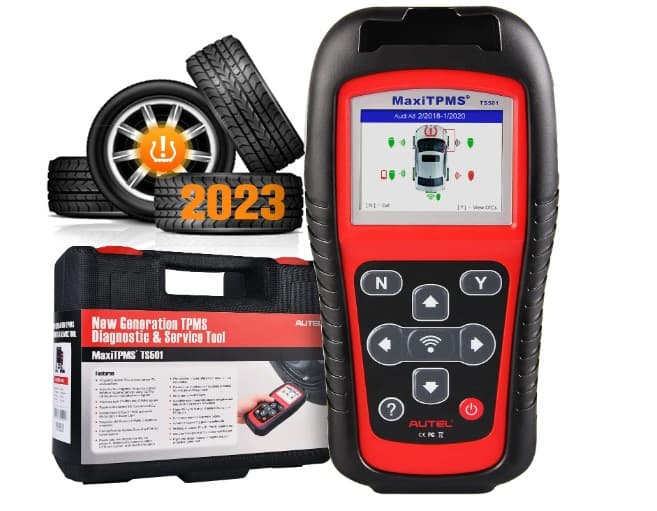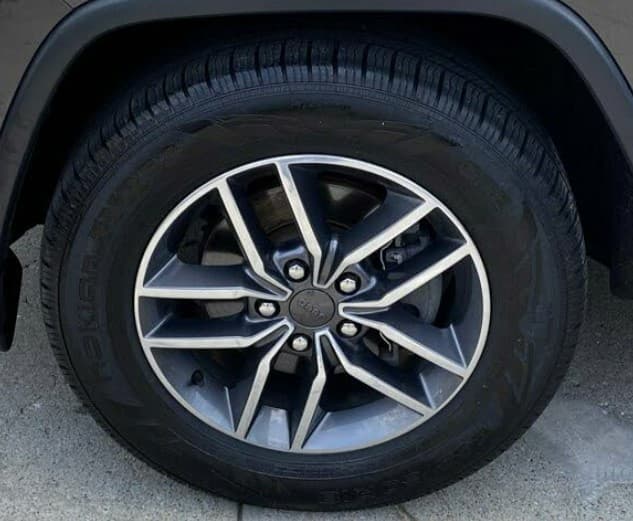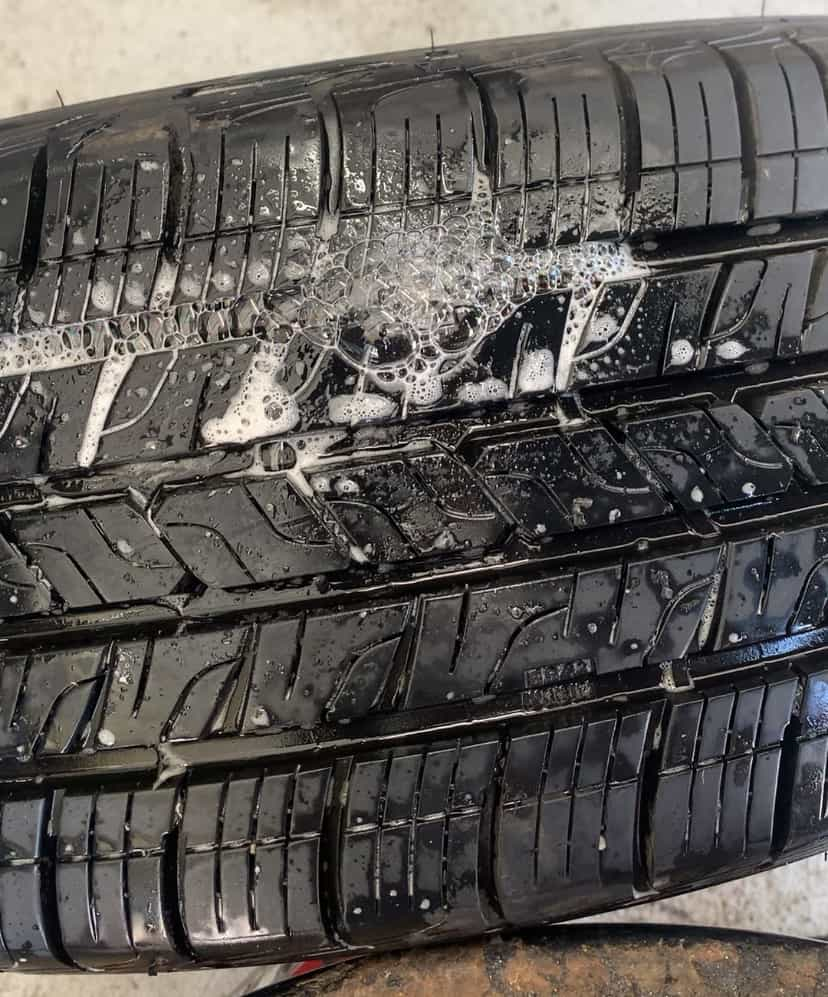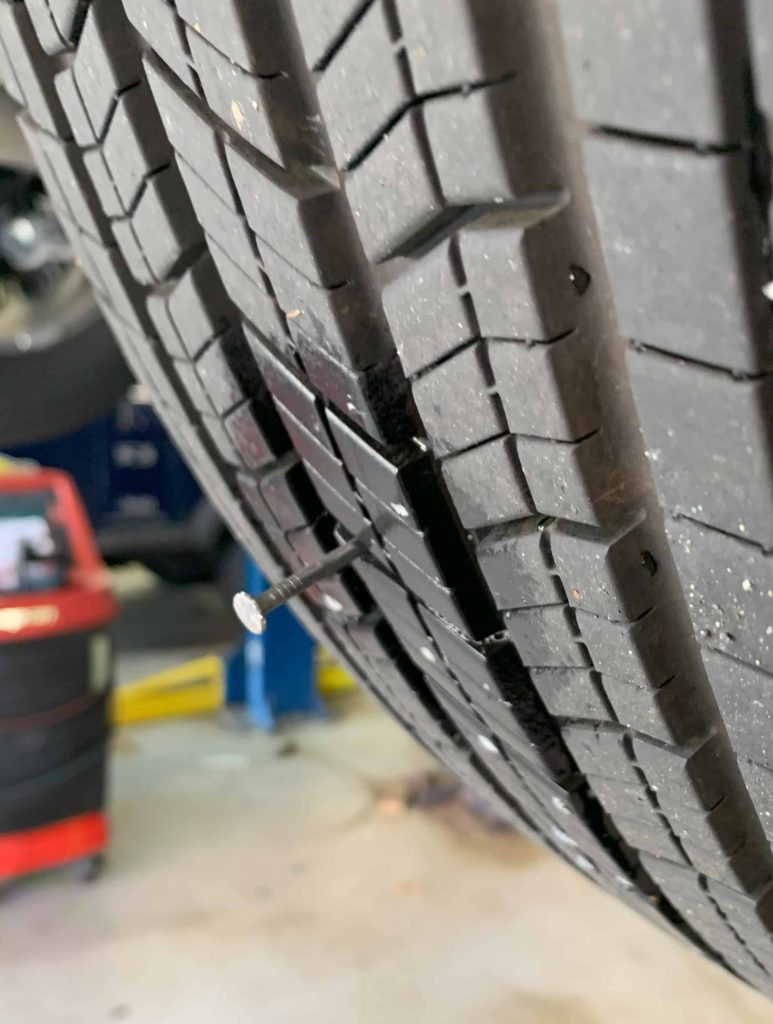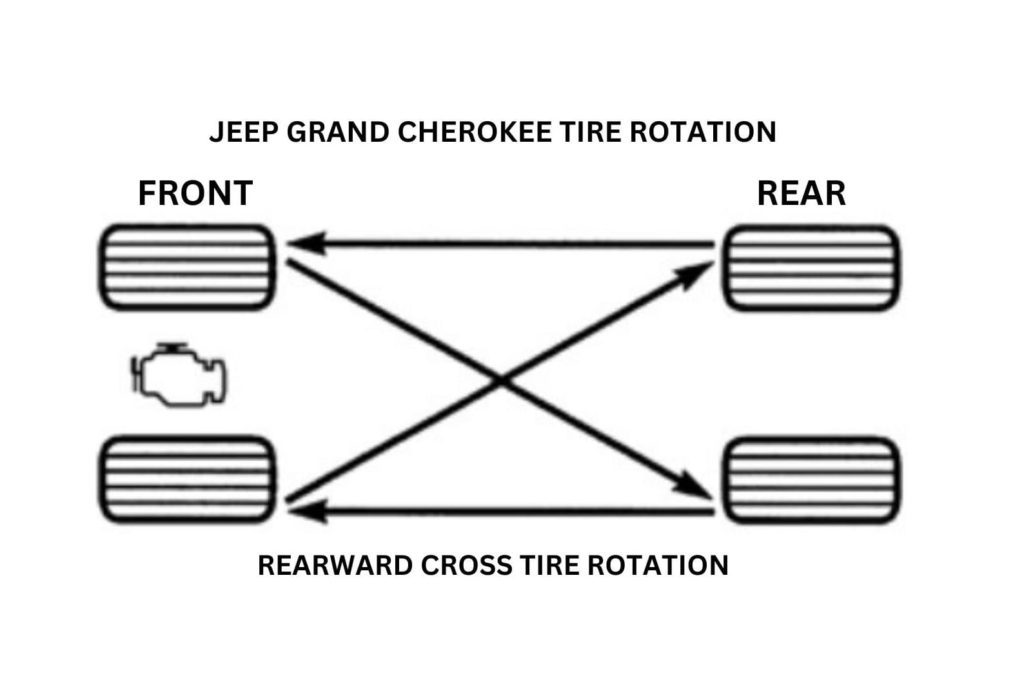How does the Jeep Grand Cherokee Tire Pressure Monitoring System Work?
The Tire Pressure Monitoring System (TPMS) in the Jeep Grand Cherokee is an essential safety feature designed to alert the driver when one or more tires are underinflated. It functions through a complex but highly efficient network of sensors, radio transmission, and receiver module. Here’s a detailed look at how it works:
Sensors: The system incorporates a sensor inside each tire that’s either part of the valve assembly or strapped to the wheel. These sensors are battery-powered and measure the pressure and temperature in each tire.
Pressure Measurement: The sensors continually measure the pressure within each tire and send this data to a central control unit.
Radio Transmission: The data from each sensor is transmitted via radio frequencies to a central receiver, usually located within the vehicle’s body. Frequencies used are either 315 Mhz or 433 Mhz.
Control Unit Processing: The central control unit or TPMS module receives the data from all the tire pressure sensors. It then compares the pressures to a predetermined ‘safe’ range. The safe range is determined by the vehicle manufacturer and reflects the optimal tire pressures for the vehicle, considering its weight, the tire’s specifications, and the optimal driving conditions.
Alert Mechanism: If any tire’s pressure falls outside this range (usually 15% – 25% drop below the manufacturer’s recommendation), the TPMS module triggers a warning. This alert can manifest as a yellow exclamation point light on the dashboard or a text warning, depending on the model and year of the Jeep Grand Cherokee. The dashboard that displays the current tire pressure will also alert you by changing the color of the text from green to red of whichever tire is currently low on air.
Jeep Grand Cherokee Tire Pressure Light Reset Procedure (2011-2023)
Set all four tires to the exact recommended pressure with the tires cold. (Do this before driving more than one mile or after the Jeep Grand Cherokee has been parked for more than a few hours.
Drive the Jeep Grand Cherokee above 15 Mph for over 20 minutes. (there is not a tire pressure “reset button”)
Once the tire light has turned off and the dashboard display showing current tire pressures has returned to the recommended value, the TPMS is reset.
What are Common Causes for the Tire Light to Come On?
Your Jeep Grand Cherokee tire pressure warning light can illuminate for many different reasons. Below is a list of possible causes:
Low Tire Pressure: This is the most common and probable reason your Jeep tire pressure warning light is on.
High Tire Pressure: Overinflation is unsafe and bad for the tread of your tires. It will also cause your tire pressure light to turn on.
Temperature Fluctuations: Changes in weather and air temperature will cause your tire pressure to increase or decrease. This will turn on your tire pressure light and is very common in the winter of colder regions.
TPMS Battery Failure: Each tire pressure sensor is battery powered and all batteries eventually run out of juice. (read more on this below)
Mismatched Tires: All tires are not created equal. This means that tires of different sizes, tread patterns, or types on the Jeep can cause the TPMS to generate a warning message.
Spare Tire Installation: The Jeep Grand Cherokee spare tire does not have a tire pressure sensor in it. This means if you’re driving with the spare tire on, the TPMS will activate because it detects a wheel without a sensor.
Damage to a Tire: Physical damage such as a puncture, tear, bubble, or other structural compromises may lead to air pressure loss which will set off the TPMS light.
Wheel Damage: Hitting potholes has severe consequences such as wheel cracks. Wheel cracks will cause air pressure loss, setting off the tire light.
Damaged or Corroded TPMS Sensor: The Jeep TPMS sensor is part of the tire air valve. If the air valve is corroded or no longer holding a seal to the wheel, air will seep out and cause the tire light to come on.
TPMS Receiver Module Malfunction: A problem within the TPMS receiver module such as wiring or electronic issues, can cause a TPMS error message.
Recent Tire Service or Rotation: Without resetting the TPMS, the system may think the front tires are in the rear and the rear tires in the front.
Use of a Different Wheel: Driving with a wheel without a TPMS sensor installed or is not compatible with the vehicle’s system will activate the warning.
Change in Altitude: Drastic changes in altitude such as when driving through mountainous terrain may temporarily affect tire pressure readings.
Aging Tires: Old or worn-out tires can dry-rot and not hold air pressure as well as they used to, this will lead to the activation of the warning light.
Understanding Tire Pressure
How Does Weather Affect Jeep Grand Cherokee Tire Pressure?
Your Jeep Grand Cherokee tires can be highly influenced by temperature fluctuations. As temperatures drop, the air inside the tire contracts which leads to a reduction in air pressure. This is why in colder months your tire pressure light is constantly on. In hot weather the air expands which causes an increase in pressure. For every 12°F change in air temperature, the tire pressure will go up or down in the same direction as the air temperature by about 1 psi.
How to Check Tire Pressure
Find the Recommended Pressure: Open the driver side door and you’ll see a yellow and white sticker on the door frame with the front and rear tire pressures on it.
Gather Tools: Get an accurate tire pressure gauge and an air compressor.
Wait for the Tires to Cool: Tires should always be cold before checking tire pressure to ensure an accurate reading. It’s best to check them after the vehicle has been sitting for a few hours or first thing in the morning.
Check the Pressure: Remove the valve cap from one tire. Place the tire pressure gauge onto the valve stem and press down quickly to get a reading. Record the pressure and repeat this process for all four tires.
Compare with Recommended Pressure: Determine if the pressure is too high or too low compared to the recommended levels.
Adjust if Necessary: if the tire pressure is too low, add air. If the tire pressure is too high, push down on the valve stem gently and release air.
Replace Valve Caps: Once you have adjusted the pressure, don’t forget to screw the valve caps back on all the tires.
2022 Jeep Grand Cherokee Wheel Size and Tire Pressure
TIRE SIZE | FRONT PSI | REAR PSI |
245/70R17 | 33-36 | 33-36 |
265/60R18 | 33-36 | 33-36 |
265/50R20 | 33-36 | 33-36 |
275/45R21 | 33-36 | 33-36 |
SPARE | 60 | 60 |
Tire Fill Alert System
The “Tire Fill Alert” is a feature in the 2022 Jeep Grand Cherokee that is designed to notify the driver when the recommended tire pressure is reached while inflating or deflating the tires. Here’s how it works and how to use it:
How Does the Tire Fill Alert System Work?
Activation: The system turns on when it notices an increase in tire pressure while filling the tire with air. The ignition must be in the ON/RUN position, and the SUVs transmission must be in PARK.
Operation: When Tire Fill Alert mode is entered the hazard lights will start blinking, and the tire pressure display screen will come on the dashboard. The horn will beep to indicate various states of tire inflation:
Beep once when the required air pressure is reached (33 or 36 Psi).
Beep three times if the tire is overfilled the horn will keep beeping every 5 seconds as air is added (any pressure over 33 or 36 Psi).
Beep once more when enough air is released to reach the recommended 33 or 36 Psi.
Beep three times if the tire is low on air and keep beeping every five seconds if the user continues to let air out of the tire.
Selectable Tire Fill Alert (STFA): This feature enables you to choose a pressure level for inflating or deflating the tires of your vehicle and offers feedback during the process. You have the option to select air pressure configurations for the tires on both the front and rear axles and you can save up to two groups of predefined pressure measurements in the Uconnect system applications.
Restrictions: The system is designed to inflate or deflate only one tire at a time, requiring the user to wait for 26-30 between adjusting each tire’s pressure. If the TPMS low warning light is on or the Grand Cherokee TPMS has been turned off, this function cannot be accessed.
Disabling/Enabling: In the Uconnect system’s apps menu, you have the option to either enable or disable the Tire Fill Alert feature.
Can You Disable the Jeep Grand Cherokee TPMS?
If you want to disable your Jeep Grand Cherokee tire pressure system the display will show dashes (—) instead of the tire pressure numbers. Here is how it’s done:
How to Turn It Off: If you want to turn off the Jeep Grand Cherokee TPMS, replace all four OEM wheels with ones that don’t have TPMS sensors mounted inside.
What to Do Next: After swapping the wheels, drive for around 20 minutes at a minimum of 20 mph. You’ll hear a chime and the TPMS malfunction indicator will blink for about a minute and then stay illuminated. A “SERVICE TPM SYSTEM” warning message will show and dashes (–) will replace the pressure numbers.
After Turning Off: The next time you start the car, you won’t hear the chime or see the message, but the dashes (–) will still be there instead of tire pressure numbers .
Turning Jeep Grand Cherokee TPMS Back On After Disabling it
How to Turn It Back On: To turn the TPMS back on all you have to do is put the original tires and wheels with the OEM tire pressure sensors back on the Jeep.
What to Do Next: Drive the Grand Cherokee again for around 20 minutes at a minimum of 20 mph. You’ll hear the same chime and see the TPMS low warning light blink for about a minute then turn off. The “SERVICE TPM SYSTEM” message will appear, followed by the actual pressure numbers instead of dashes.
After Turning On: Next time you start your Jeep Grand Cherokee the “SERVICE TPM SYSTEM” message will be gone as long as you don’t actually have low air pressure or any other TPMS issues.
So, in simple terms, you can turn off the TPMS by changing the tires and driving a bit, and turn it back on by reversing the process. It’s a way to switch between regular tires and winter ones without the car constantly warning you about the tire pressure.
What are the Impact of Driving the Jeep Grand Cherokee with Low Tire Pressure?
Driving a Jeep Grand Cherokee with underinflated tires can have several negative impacts.
Decreased Fuel Efficiency: Underinflated tires create more rolling resistance, causing the engine to work harder and burn more fuel.
Poor Handling: The SUV’s steering feel and handling may be compromised, leading to a less responsive and potentially unsafe driving experience.
Increased Tire Tread Wear: Tires that are underinflated wear out quicker especially on the outside edges of the tread, requiring more frequent replacements.
Risk of Tire Failure: Driving on underinflated tires will cause the tires to heat up beyond what they were built to withstand which increases the risk of a blowout or sudden tire failure.
Reduced Braking Performance: Slowing down the Jeep will be harder, potentially increasing the risk of collisions.
Adverse Effects on Ride Comfort: The ride quality may become rougher.
Potential Damage to Wheels and Suspension: Underinflated tires may not provide adequate cushioning against potholes or other road imperfections. This can cause potential wheel and suspension damage.
Environmental Impact: Reduced fuel efficiency results in increased emissions and increased tread wear results in premature tire replacements both adding to pollution and waste.
Is it Safe to Drive With the Low Tire Pressure Light On?
The short answer is no. But you really need to know why the tire pressure light on your Jeep Grand Cherokee is on before you can determine if it is safe or not to drive. You need to answer questions such as; is there a tire leak? Is the tire losing air slowly or quickly? Are the tires fine but a tire pressure sensor has a dead or low battery? Getting answers and understanding them will allow you to determine if it is safe to drive with the tire light on and if so, for how long?
Tire Pressure Sensor Batteries
Every wheel of the Jeep Grand Cherokee has its own tire pressure sensor mounted to the other side of the valve stem. They each operate independently and utilizes a built-in battery akin to those used in key fobs or wristwatches. Housed within a plastic enclosure and directly connected to the sensor’s circuit board, these batteries cannot be replaced. This means that when the battery is depleted or close to dying, a complete sensor replacement becomes necessary. The battery’s lifespan can be affected by various elements such as driving conditions, changes in weather, and the frequency and duration of your journeys. Typically, the batteries in tire pressure sensors have a lifespan ranging from 5 to over 10 years but I’ve personally seen them last less than that and longer than that.
Troubleshooting & Diagnosing Jeep Grand Cherokee TPMS
If you’re encountering difficulties with turning off or resetting the tire pressure light in the Jeep Grand Cherokee, here are five potential solutions worth trying:
Solution 1: Is a Tire Losing Air?
The most frequent cause for the tire light to activate is a loss of air pressure due to a leak of some kind. If you inflate the tire that has low pressure and the tire light shuts off or resets, but then find that the light reappears within minutes, hours, or days, it confirms that there is a leak in the tire or wheel.
Solution 2: Activate a Non-Responsive TPMS Sensor
If the tire light is on but you’re sure your tires aren’t losing air, the sensor may simply need to reactivated or “woken up”. Start by pinpointing the tire causing the alert, then deflate it by roughly 15 to 20 Psi, and re-inflate it to about 10 Psi above the recommended pressure (for instance, if the recommended pressure is 36 Psi, inflate it to 46 Psi). With the tire overinflated, take a brief drive for 10 minutes at speeds above 15 Mph (We recommend to stay off busy roads or highways and stay below 40 Mph). After, park your Jeep and set the tire pressure back to the recommended pressure levels. Turn the engine off and then back on again and take your Jeep for another ride for at least 10 minutes.
Solution 3: Erase the Jeep Grand Cherokee TPMS Diagnostic Trouble Codes
Should everything else prove ineffective and you’re confident that your tires aren’t losing air, you can manually clear the error codes from your Jeep Grand Cherokee Electronic Control Unit (ECU). This action requires disconnecting the negative terminal of the vehicle’s 12-volt battery. Leave it disconnected for a few minutes before reconnecting the terminal. This process essentially wipes all the current fault codes in the ECU including the one triggering the tire pressure warning light. If the tire light turns off but then reappears following this procedure, it’s probable that a sensor is faulty or there is an actual leak in one of the tires
Solution 4: Check the Battery Status of Each TPMS Sensor
If you suspect that a low battery in one of your tire pressure sensors (TPMS malfunction) is causing the tire pressure light to activate, you can examine the state of each sensor using a TPMS diagnostic tool. Despite the specific TPMS diagnostic tool, the procedure is generally consistent across different makes and models. To assess each sensor, position the TPMS tool directly in front of the valve stem and choose the “test” function on the device. Once you’ve done this for all four pressure sensors, the TPMS tool will generate a report detailing the current battery status of each sensor. If any sensor’s status reads as “low,” or will not give a status report, it indicates that particular sensor requires replacement.
Solution 5: Does the Tire Light Turn On and Then Turn Off On its Own?
If the tire pressure light in yourJeep Grand Cherokee comes on when you start the engine but turns off as you begin driving, it suggests that your tire pressure is slightly beneath the necessary threshold. This might happen when your tires are cold at the beginning of the day (for example, at 29 Psi) and then warm up during your drive. As the tires heat up the pressure increases (potentially to 36 Psi, the correct pressure), leading to the warning light to turn off on its own. To remedy this situation make sure that each tire is accurately inflated to the correct pressure level.
Why is the Tire Light Flashing?
The TPMS malfunction indicator is like an “SOS” light for the system that checks your tire pressure. If something isn’t working right with the tire pressure monitoring system the tire pressure light will flash for about one minute and then stay on. If you see this happen, it means the system is not working correctly and can’t warn you about tire pressure issues. The TPMS malfunction indicator uses the same light on the dashboard as the low tire pressure indicator (yellow exclamation mark). Keep in Mind: if you have a TPMS malfunction, it either means the system is not detecting one or more tire pressure sensors or you’re driving with the spare tire on. This is not an air pressure issue.
Tire Leaks and Solutions
How to Find a Tire Leak?
To find where your tire is leaking from, start by examining the air pressure in all four tires to find out which one is deflated. Inflate the affected tire to a minimum of 35-40 Psi, as detecting a leak in a completely flat tire is next to impossible. Next, prepare a spray bottle filled with a blend of water and soap (a window cleaner like Windex is also suitable). Generously spray this mixture all over the tire, paying particular attention to the valve stem and bead seal. Once the tire is thoroughly covered in the soapy solution, look for small bubbles forming on its surface. If there’s a leak, the escaping air will create tiny bubbles at the location of the leak. Remember, if the tire is losing air, a leak is present somewhere.
Are Tire Plugs Safe?
Yes, I have personally utilized tire plugs to repair hundreds of tires and I’ve found them to be incredibly dependable. When tire plugs are properly installed they can last for the entire lifespan of the tire. It’s important to note that tire plugs should only be used on the tread of the tire and never in the sidewall.
Jeep Grand Cherokee Tire Rotation Pattern
Jeep recommends rotating the Jeep Grand Cherokee tires in the rearward cross pattern. The rearward cross pattern is executed by moving the rear tires to the front. Rear right to front right and rear left to front left. The front tires switch sides from their original location and move to the rear. The front right moves to the rear left and the front left moves to the rear right. Tire rotation is essential to get the most out of your tires and will substantially increase tire tread life. We recommend rotating your tires every 6,000 to 8,000 miles. After rotating your tires be sure to tighten the lug nuts down with a torque wrench to the correct torque specification. Jeep recommends each 22 mm lug nut be torqued to precisely 130 Ft-Lbs.
Everything in this article is applicable to all Jeep Grand Cherokee Models including the Jeep Grand Cherokee Laredo, Laredo X, Altitude, Altitude X, Limited, Overland, Summit, and Summit Reserve.
Please note that this blog post contains Amazon affiliate links. This means that if you make a purchase through one of these links, we at TPMSRESET.COM may earn a small commission at no extra cost to you. We only recommend products that we personally use and believe in. Thank you for supporting us.
